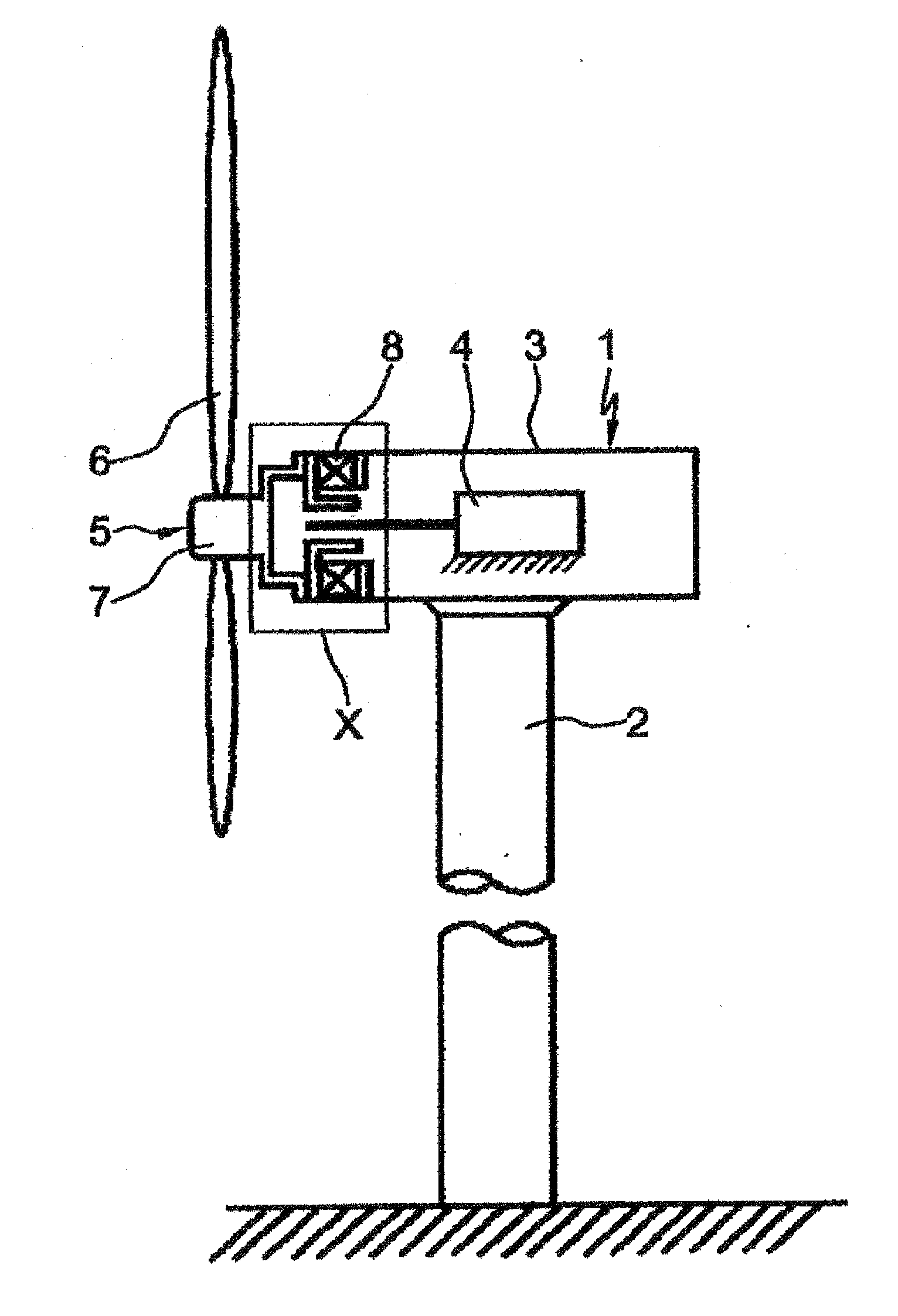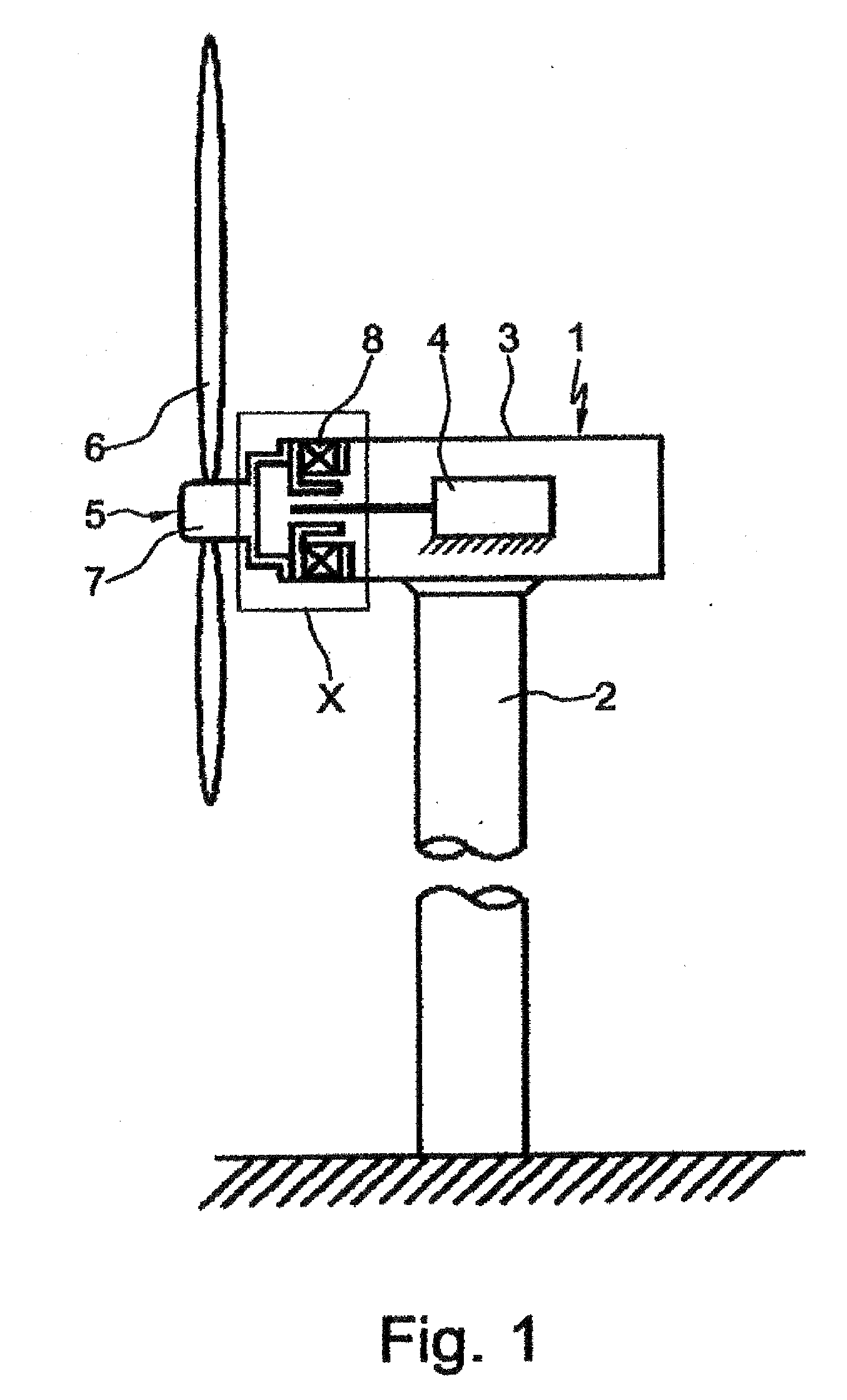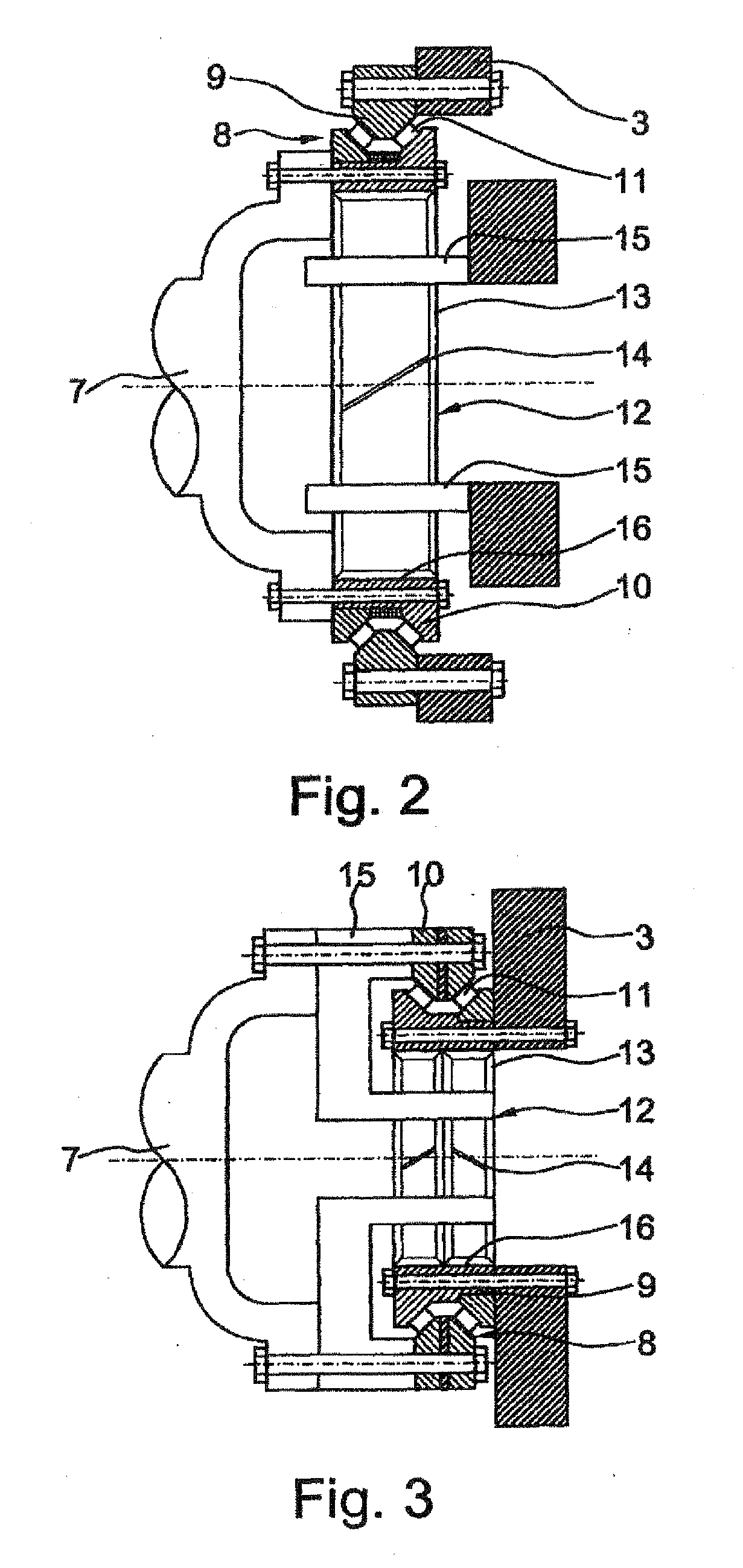[0011]Designing the large roller bearing as a two-row conical roller bearing in this case represents the preferred practical embodiment since this type of bearing fundamentally has higher load ratings and a
higher power density. However, if the intention is to use large roller bearings with larger diameters, in which the
power density no longer represents the critical criterion, a technically quite acceptable alternative is to be also designed in the form of a two-row inclined
ball bearing. In this case, the two types of bearing, both for the inner bearing ring and for the outer bearing ring, can either be attached in a rotationally fixed manner to the machine housing or to the machine support, or else can be connected to the rotor hub of the rotor, in which case the axially asymmetric separation of the inner bearing ring of both embodiments into two ring elements is necessarily primarily to allow the large roller bearing to be installed more easily.
[0012]Independently of the previously described embodiments, a further feature of the rotor bearing according to the invention, as claimed in claim 4, is that, as a result of the asymmetric
subdivision, the inner bearing ring comprises a first
ring element, which has the complete internal tooth
system on its inner face, and a second
ring element, which is mounted on this
ring element by a push fit. The asymmetric
subdivision of the inner bearing ring therefore has the
advantage, at the same time that the large roller bearing can be installed more easily, that the internal tooth system can be incorporated entirely in one of the ring elements, and can therefore be produced at a lower cost. In this case, it has been found to be particularly advantageous for the second ring element to completely form one of the two raceways for the roller bodies of the large roller bearing, although other asymmetric subdivisions of the inner bearing ring are also feasible.
[0015]However, more recent gearbox concepts generally provide an oblique tooth system for all the wheels in the epicyclic gearbox, since this tooth system makes it possible to choose an inclination angle which results in a considerably greater coverage level in the tooth system in comparison to a straight tooth system, thus considerably reducing vibration and
noise during wind operation. Furthermore, the tooth system can be designed to have up to twice the
tooth length of a straight tooth system, thus allowing considerably greater torque to be transmitted while occupying the same amount of
physical space. In addition, the oblique tooth system offers the capability to compensate for external axial forces in that the inclination direction of the tooth system is designed to correspond to the direction of the externally acting axial forces.
[0016]However, by far the greatest advantages are offered by an epicyclic gearbox in which both the hollow wheel and the planet wheels as well as the sun wheel have a double-inclined or arrow tooth system. The special feature of such a double-inclined or arrow tooth system is in this case the
high coverage level of the tooth system, which allows quiet, low-vibration operation of the epicyclic gearbox. The two-directional axial forces, which result from the oblique tooth systems in opposite directions, are in this case directed such that they cancel one another out, thus ensuring optimum load transmission. Furthermore, a double-inclined or arrow tooth system has the particular
advantage that the axially moving bearing of the planet wheels compensates for any alignment errors between the two tooth-system areas which result on the inner bearing ring when manufacturing the tooth systems, since the planet wheels are automatically centered by the tooth-system profile.
[0019]Another suitable measure for adjusting the axial play of the large roller bearing in the form of a conical roller bearing or inclined
ball bearing would also, as an alternative, be to at least provide the second ring element of the inner bearing ring with a defined width by
grinding its axial side facing the first ring element. However, it would also be feasible to appropriately machine the mutually facing axial sides of both ring elements or to influence their axial size by coatings. Since
processing such as this is relatively complex and costly from the manufacturing point of view, however, the use of a spacer ring for axial play adjustment has been found to be most advantageous both for cost reasons and for the reason that this also makes it possible to compensate relatively easily for any
processing errors in the width of the spacer ring, by replacement by a fitting spacer ring.
[0020]In summary, the rotor bearing according to the invention therefore has the
advantage over rotor bearings known from the prior art that the large rotor bearing, as before, can absorb all the forces and torques acting on the rotor while, at the same time, carrying out the function of this hollow wheel by means of the tooth system of the hollow wheel of the downstream epicyclic gearbox being integrated in the inner bearing ring. The rotor bearing according to the invention is therefore compact and weighs less, and is distinguished by a smaller number of individual parts on the large roller bearing and on the epicyclic gearbox. Furthermore, the integral nature of the inner bearing ring and hollow wheel means that the negative influences which previously occurred because of the positive excessive fit size in the push fit between the inner bearing ring and the hollow wheel on the function of the bearing point or on the tooth system in the epicyclic gearbox, are reliably precluded.
 Login to View More
Login to View More  Login to View More
Login to View More 


